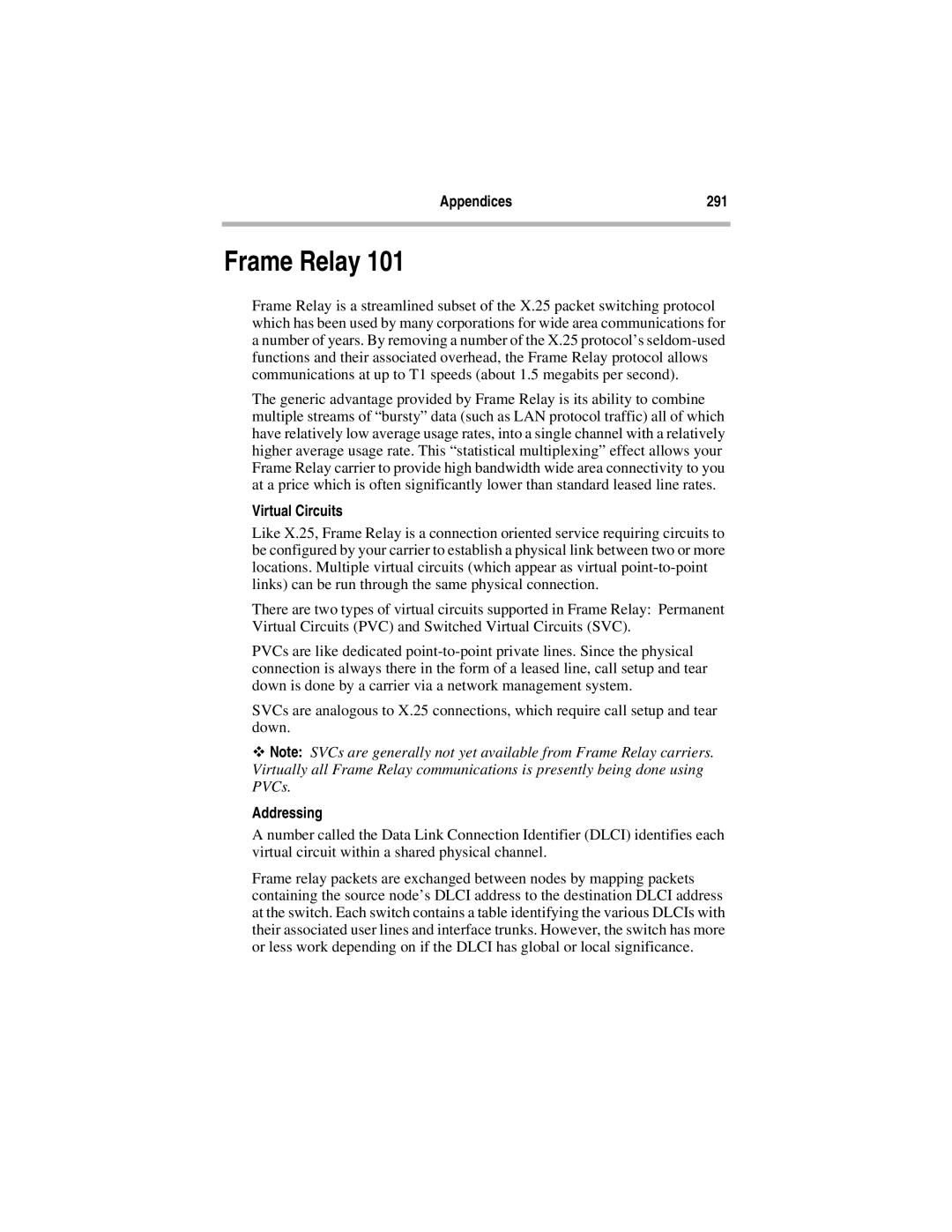Appendices | 291 |
|
|
Frame Relay 101
Frame Relay is a streamlined subset of the X.25 packet switching protocol which has been used by many corporations for wide area communications for a number of years. By removing a number of the X.25 protocol’s
The generic advantage provided by Frame Relay is its ability to combine multiple streams of “bursty” data (such as LAN protocol traffic) all of which have relatively low average usage rates, into a single channel with a relatively higher average usage rate. This “statistical multiplexing” effect allows your Frame Relay carrier to provide high bandwidth wide area connectivity to you at a price which is often significantly lower than standard leased line rates.
Virtual Circuits
Like X.25, Frame Relay is a connection oriented service requiring circuits to be configured by your carrier to establish a physical link between two or more locations. Multiple virtual circuits (which appear as virtual
There are two types of virtual circuits supported in Frame Relay: Permanent Virtual Circuits (PVC) and Switched Virtual Circuits (SVC).
PVCs are like dedicated
SVCs are analogous to X.25 connections, which require call setup and tear down.
ϖNote: SVCs are generally not yet available from Frame Relay carriers. Virtually all Frame Relay communications is presently being done using PVCs.
Addressing
A number called the Data Link Connection Identifier (DLCI) identifies each virtual circuit within a shared physical channel.
Frame relay packets are exchanged between nodes by mapping packets containing the source node’s DLCI address to the destination DLCI address at the switch. Each switch contains a table identifying the various DLCIs with their associated user lines and interface trunks. However, the switch has more or less work depending on if the DLCI has global or local significance.
